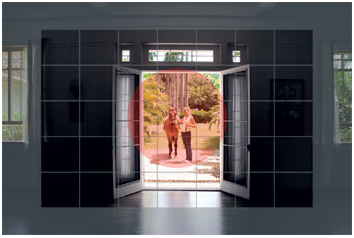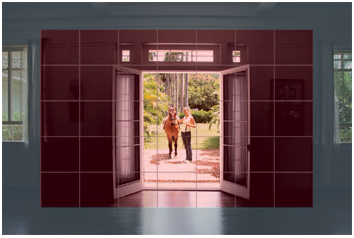I been trying to figure out a nice way of going about this whole metering thing, but i just realized that i will have to do it in sections, starting of with what metering type does and how it works etc. Pretty much covering the basics of metering if you will.
There are three main modes that your DSLR will allow you to meter; Center-weighted, Spot metering and Matrix-metering. I have gone into bit of detail about each metering mode below:
Center-weighted metering:
This asses the whole image area that your looking at through the viewfinder, but assigns the most importance to the central 40 to 60%. This system is accurate in average lighting conditions, but can be fooled by excessively dark or light areas. In practice this is most like the spot metering but some what bigger, and it can be used in tricky light situations, for example if the light is coming from behind the subject, if you were to use the matrix mode you would probably have gotten a silhouette, but with this mode you will make suer that the face for example will get the correct exposure.
In practice this is most like the spot metering but some what bigger, and it can be used in tricky light situations, for example if the light is coming from behind the subject, if you were to use the matrix mode you would probably have gotten a silhouette, but with this mode you will make suer that the face for example will get the correct exposure.
Spot metering:
Only evaluates a small area in the center of the viewfinder so you can meter for a specific detail of the scene (e.g. when photographing a subject against a
bright or dark background). This applies about the same to the metering mode mentioned above, which is to use this mode in rather tricky light situations (eg. when you have a light coming from the back). It will make sure the area in the center of your frame will be correctly exposed, this metering mode is some what more accurate then the center weight one because the metering will come from a specific spot, and the camera isn't working by using "average" calculations.
This applies about the same to the metering mode mentioned above, which is to use this mode in rather tricky light situations (eg. when you have a light coming from the back). It will make sure the area in the center of your frame will be correctly exposed, this metering mode is some what more accurate then the center weight one because the metering will come from a specific spot, and the camera isn't working by using "average" calculations.
Matrix-metering:
Divides the image area into many small segments and analyses the readings for the best possible exposure. It is remarkably accurate in most situations.
Automatic exposure modes work fine for most scenes, but the meter can only see
scenes as neutral gray and compensates for any deviations accordingly. So you should know when to override the meter's results. If the subject contains more than average
dark or light tones you should take a substitute reading of an average gray area, lock
that exposure and then recompose the image and release the shutter. In practice, or for starters, i would suggest using this mode, and if the camera isn't getting what you want it to get, try the other modes, or if your really sure on what you want to have correctly exposed.
In practice, or for starters, i would suggest using this mode, and if the camera isn't getting what you want it to get, try the other modes, or if your really sure on what you want to have correctly exposed.
Below is gif to give you a diagrammatic idea of everything:
So why is metering so important? Well it will work out what area that your camera is going to decided to have correctly exposed so to speak. But often you will find yourself in a pickle and and messing around with the metering modes isn't going to help. I almost always shooting in the matrix-metering mode because i find this to be the most reliable one, specially Nikon's matrix metering mode hasn't failed me BIG time yet.
But there are moments when it comes to portraiture that i will use the spot metering mode because then the main subject the person, is what i want to be correctly exposed. I cannot recall a proper photograph that i took with the center-weight metering mode, this is because i think if i want to use that mode "i might as well use the matrix mode" or the spot metering mode, but then again for those moments when i m unsure i will try the different metering modes!
Hope that helped out some people, did my best in explaining it with some photos i found on the web!
Its rather hard to
Friday, May 30, 2008
Photography: Understaing the Metering modes
Subscribe to:
Post Comments (Atom)

No comments:
Post a Comment